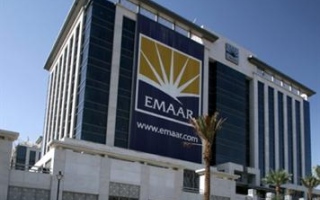- City Fajr Shuruq Duhr Asr Magrib Isha
- Dubai 04:26 05:44 12:20 15:47 18:50 20:08
The battered Indian rupee made an all-time low of Rs15.83 against the UAE dirham (Rs58.15 against the US dollar) at 15:48 UAE time (11:48 GMT) on Monday afternoon as persistent dollar demand from Indian importers and banks continue to push the currency lower.
The current bout of dollar strength and the consequent weakness in the Indian rupee as well as the Philippines peso (trading at PHP11.67 vs. Dh1, very close to its one-year low of PHP11.69 made last year in June) and Pakistani rupee (trading at PKR26.83 vs. Dh1, near its all-time low of PKR26.84 made last week) are bound to increase the remittance flow from the UAE and the rest of the Gulf countries.
The Indian rupee broke its all-time record of Rs15.55 against Dh1 set last year on June 22, 2012, and is in the danger of further slumping unless the Reserve Bank of India (RBI) intervenes in the market and dumps dollars. India has foreign exchange reserves of around $290 billion at its disposal, which the country's monetary bodies can and do use to defuse volatility in its currency.
The US dollar has been gaining currency (pun intended) on fears that an improving American economy will see the US Federal Reserve contracting its quantitative easing programme, which will stem the flow of easy money into emerging markets on the one hand, and will further bolster the dollar on the other.
Fed chairman Ben Bernanke told the US Congress in his latest testimony that the stimulus efforts could be scales if the US employment outlook shows sustainable improvement. The market is obviously viewing the 175,000 workers that were added to the US non-farm payroll in May as a sign of improving employment fundamentals in the country, and therefore expect the stimulus to be scaled back at some point in the future.
India’s central bank, Reserve Bank of India (RBI), is expected to start intervening in the currency markets after the recent rout which has seen the rupee plunge more than 8.3 per cent in a little over five weeks.
The rupee has been under consistent pressure due to a rising dollar and India’s own economic woes, which saw its current account deficit swell to $17.8 billion in April despite the various measures initiated by the country.
Analysts expect the deficit to have further deteriorated in May, data for which is yet to be released. “We expect it to deteriorate further to $20.8bn in May, before showing some improvement in June,” said Nomura in its report on the Indian economy.
India’s exports remain sluggish despite a weakest-ever rupee, and the country’s gold demand is only rising in spite of the 8 per cent tax rate on gold imports into the country. These factors coupled with a stronger dollar thanks to an improving US economy will keep the rupee under pressure, maintain analysts.
One of the fallouts from a weak rupee is that overseas remittances will surge and India, which is already the world’s largest recipient of remittances, will have some kind of foreign exchange backing to pay for its inflated imports bill.
A stronger dollar is also expected to have an impact on the UAE and the GCC’s other expat currencies, including the Philippines peso, which was also trading near one-year lows of PHP11.67 against Dh1 on Monday morning.
Last year, total remittances by the GCC’s foreign workers amounted to $80 billion (representing a fifth of the global remittances), out of which 24 per cent were remitted by the migrant workers in the UAE, noted Ambassador Ahmed Al Jarman, Permanent Representative of the UAE to the United Nations at a UN roundtable earlier this week.
“The UAE participates in the emerging international consensus on the need to recognise labour mobility as an engine for development, supports the increasing focus on the link between migration and development in the regional and international dialogues, and looks forward to working with other governments and stakeholders to integrate migration issues in the post-2015 Development Agenda of the United Nations,” Al Jarman said.
(Home page image courtesy Shutterstock)
ALSO READ:
Is 'expat package' dead in Dubai? Here are most outrageous ones…

Emaar in negotiation with Dubai Holding to develop Dubai Creek Harbor

Dubai's The World: Construction on Taiwan begins post-Ramadan
![]() Follow Emirates 24|7 on Google News.
Follow Emirates 24|7 on Google News.